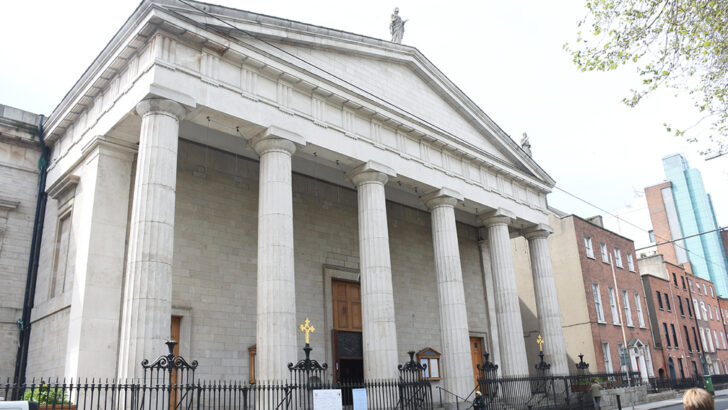Paschal Scallon CM
Old maps of Dublin are fascinating. I like one in particular published in 1797 by William Faden, cartographer to the King and the Prince of Wales. In it, the city of Dublin does not extend further than either the North Circular Road or the South Circular Road. In fact, the city fits very comfortably indeed, encircled, as it were within the ‘circumference’ of the Royal Canal and the Grand Canal.
If one were to draw a circle around the inner city of Dublin today using the boundaries shown in Faden’s map and divide it further into four quadrants, the area would still lie within the canals and be bisected north and south along a line between Binns Bridge on the Royal Canal at Phibsborough and Emmet Bridge on the Grand Canal on the way out to Harold’s Cross; and east and west by the river Liffey itself. On a map of modern Dublin, this is a very small area but one statistic puts the population within these four quadrants at 116,000 people, which makes it the most densely populated area in the country.
Expanded
Of course, Dublin has expanded enormously since the early 1800s, and part of that expansion involved the growth of suburbs into neighbouring counties. As a diocese, Dublin did extraordinary work, especially in the middle of the 20th century, to meet the pastoral needs of a sprawling city.
But the city centre remains at the heart of the diocese, and even though it would appear it has the least use for the Church or its ministry, if church attendance and ‘practice’ are concerned, it presents a challenge to our sense of urgency, our zeal, to offer the Gospel in word and action to people who live there.
Within the area bounded by the canals there are, or have been until recently, twenty-four parishes. It seems a lot and today probably represents an infrastructure for which we have little use now. The solution is not to close churches, at least not yet, but there is a need for a radical reconfiguration of how the Catholic community in the area positions itself.
I believe in providence, the often slow but ultimately sure working out of the will of God at the hands of faithful people, with whom God is eternally patient”
There is a process of ‘partnership’ of parishes underway in the Diocese of Dublin at present, but in the early 2000s ,there was talk of a reconfiguration of the whole diocese. The plans involved the establishment of ‘pastoral areas’ which would, on average, have around 25,000 people in them. In more densely populated areas, numbers in the region of 30,000 were involved and in other areas it was envisaged there might be as few as 8,000 people. The proposal was presented at regional meetings of members of parish councils, but the project did not proceed, perhaps because of the economic crash of the period and the crisis of safeguarding children which became an all-consuming issue.
I believe in providence, the often slow but ultimately sure working out of the will of God at the hands of faithful people, with whom God is eternally patient. In the context of an emerging synodality in the Church – again, a slowly emerging awareness and application in the Church of something we believe to be will of God for us – it may be time to revisit the ideas of fifteen or so years ago.
Apart from the usefulness, a reconfiguration of the diocese seems especially pertinent in the city centre. I should say, of course, that evangelisation is primarily the action of the Holy Spirit which only requires organisation because those led by the Spirit still only see things dimly. (1 Cor 13:12)
Reconfiguration
A reconfiguration of the twenty-four inner city parishes into four pastoral areas along the lines I described earlier is one possibility. Professionals – demographers, cartographers, statisticians and others – may see flaws in the suggestion and have others ideas, but within a process of meaningful consultation, that honours the aspiration to a synodal way of doing things, we will please God, see the renewal of faith in the lives of people who live and work in Dublin city centre.
We need to understand the reasons for being concerned that the faith should revive in Dublin city centre or anywhere else. We are not simply trying to revive or restore an institution that has served its purpose or worse, lost its way. We are, by grace, trying to rebuild the Church, the Communion that is people of God who are called to be the Body of Christ in their time, restoring the dignity of human being and revealing in that the glory of God. Pope Francis has explicitly called us to remember too the God given dignity of the whole of creation and to appreciate that renewal includes those whom the Holy Spirit inspires and the space in which they live. We can have and we can be a city and people of faith.


 Photo: Chai Brady
Photo: Chai Brady 